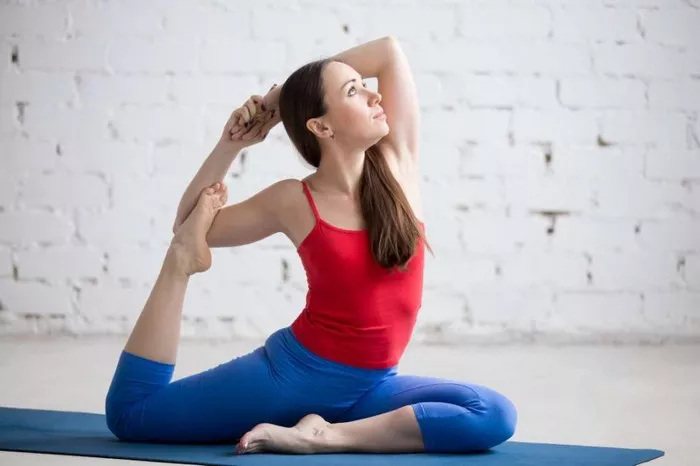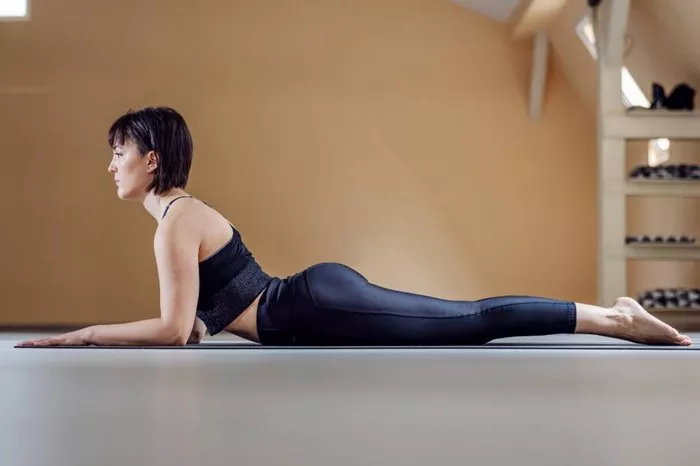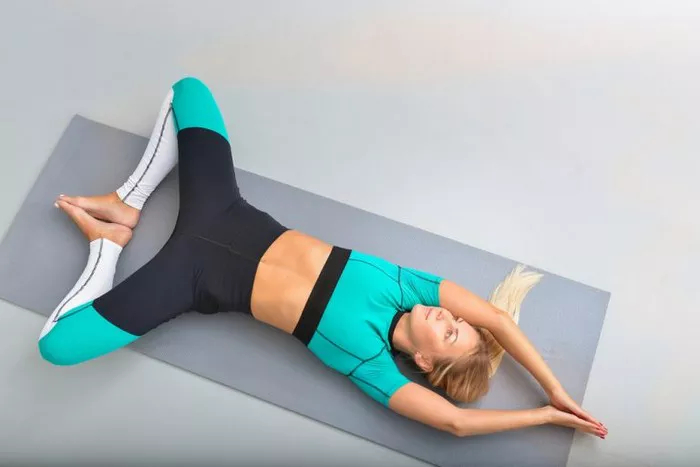Yoga is a wonderful practice that helps with flexibility, strength, and relaxation. For beginners, it can be intimidating to start. However, there are many poses that are accessible and beneficial. These poses build a strong foundation for a lifelong practice. In this article, we will explore some of the best yoga poses for beginners. Each pose will be explained in detail, so you can understand how to perform them safely and effectively.
The Importance of Proper Alignment
Before diving into the poses, it’s essential to understand the importance of alignment. Proper alignment ensures that you gain the most benefits from each pose while reducing the risk of injury. Always listen to your body and avoid pushing yourself too hard. Remember, yoga is not about perfection; it’s about progress and being present in the moment.
Mountain Pose (Tadasana)
Mountain Pose is the starting point for many standing poses. Stand tall with your feet together. Distribute your weight evenly on both feet. Engage your thighs and lift your chest. Let your arms rest by your sides, palms facing forward. Hold this pose and focus on your breath. This pose helps improve posture and balance. It also allows you to connect with your body and the ground beneath you.
Downward-Facing Dog (Adho Mukha Svanasana)
This is a classic yoga pose that stretches the entire body. Start on your hands and knees. Tuck your toes under and lift your hips up and back. Your body should form an upside-down “V.” Keep your hands shoulder-width apart and your feet hip-width apart. Press your heels toward the ground while keeping your knees slightly bent if needed. Hold for several breaths. This pose strengthens the arms, legs, and core. It also stretches the back, hamstrings, and calves.
Child’s Pose (Balasana)
Child’s Pose is a restful pose that can be used at any time during your practice. Kneel on the floor and sit back on your heels. Lower your torso between your thighs and stretch your arms forward on the mat. Relax your forehead on the ground. Breathe deeply and feel the stretch in your back and hips. This pose calms the mind and relieves tension. It is great for beginners, especially if you need a moment to rest.
Warrior I (Virabhadrasana I)
Warrior I is a powerful pose that builds strength and confidence. Stand in Mountain Pose, then step one foot back. Bend your front knee while keeping the back leg straight. Raise your arms overhead, palms facing each other. Keep your gaze forward. This pose opens the hips and chest while strengthening the legs. It is a great way to cultivate focus and determination.
Warrior II (Virabhadrasana II)
From Warrior I, you can easily transition into Warrior II. Open your arms to the sides, parallel to the ground. Turn your head to look over your front hand. Keep your front knee bent and your back leg straight. This pose enhances stamina and concentration. It also helps develop flexibility in the hips and groin. Hold this pose while breathing deeply, feeling the strength within you.
Cobra Pose (Bhujangasana)
Cobra Pose is a gentle backbend that opens the chest and strengthens the spine. Lie face down on your mat. Place your hands under your shoulders, elbows close to your body. As you inhale, lift your chest off the mat, using your back muscles. Keep your hips grounded. Look slightly upward but keep your neck relaxed. Hold for a few breaths, then lower back down. This pose is excellent for improving spinal flexibility and posture.
Cat-Cow Stretch (Marjaryasana-Bitilasana)
The Cat-Cow Stretch is a fantastic way to warm up the spine. Begin on your hands and knees in a tabletop position. Inhale and arch your back, lifting your head and tailbone for Cow Pose. Exhale, rounding your spine and tucking your chin to your chest for Cat Pose. Repeat this flow several times, synchronizing your breath with your movements. This stretch promotes flexibility and releases tension in the spine.
Seated Forward Bend (Paschimottanasana)
This pose stretches the hamstrings and lower back. Sit on the floor with your legs extended in front of you. Inhale and lengthen your spine. As you exhale, hinge at your hips and reach for your feet. If you can’t reach your feet, grab your shins or thighs. Keep your spine long as you fold forward. This pose encourages relaxation and introspection. It is beneficial for calming the mind and relieving stress.
Bridge Pose (Setu Bandhasana)
Bridge Pose is a gentle backbend that opens the chest and strengthens the back. Lie on your back with your knees bent and feet flat on the floor, hip-width apart. Place your arms by your sides, palms down. Inhale and lift your hips toward the ceiling, pressing your feet into the ground. Clasp your hands under your back if possible. Hold for several breaths, then lower back down. This pose helps improve spinal flexibility and stimulates the abdominal organs.
Legs-Up-the-Wall Pose (Viparita Karani)
Legs-Up-the-Wall Pose is a restorative pose that calms the nervous system. Sit next to a wall and lie on your back. Swing your legs up the wall while keeping your hips close to the wall. Let your arms rest by your sides or on your belly. Close your eyes and breathe deeply. Hold this pose for several minutes. This inversion promotes relaxation and can help reduce anxiety and fatigue.
Pigeon Pose (Eka Pada Rajakapotasana)
Pigeon Pose is excellent for opening the hips. Begin in a tabletop position. Bring your right knee forward and place it behind your right wrist. Extend your left leg back, keeping it straight. Lower your torso over your right leg and relax your arms on the mat. Hold for several breaths, then switch sides. This pose stretches the hips and groin, relieving tension and increasing flexibility.
Triangle Pose (Trikonasana)
Triangle Pose is a great way to stretch the sides of the body and strengthen the legs. Stand with your feet wide apart. Turn your right foot out and extend your arms to the sides. Hinge at your hips and reach your right hand toward your right foot. Place your hand on your ankle, shin, or the floor. Extend your left arm up, looking toward your left hand. Hold for several breaths, then switch sides. This pose enhances stability and balance.
Corpse Pose (Savasana)
Corpse Pose is often used at the end of a yoga practice. Lie on your back with your legs extended and arms by your sides. Close your eyes and focus on your breath. Allow your body to relax completely. This pose helps integrate the benefits of your practice and promotes deep relaxation. Stay in this pose for 5 to 10 minutes, letting go of any tension or stress.
See also: What Are the Benefits of Iyengar Yoga Restorative Asanas?
Creating a Beginner’s Routine
Now that you are familiar with these foundational poses, you can create your own beginner’s yoga routine. Start with Mountain Pose to center yourself. Follow with Downward-Facing Dog to warm up. Then, include a mix of standing poses like Warrior I and Warrior II. Add some seated stretches like Forward Bend and Pigeon Pose. Conclude your practice with Bridge Pose and Savasana for relaxation. Aim for a 30-minute session, focusing on your breath and alignment.
Tips for Practicing Yoga Safely
Safety is paramount in yoga. Always listen to your body and avoid pushing beyond your limits. If something doesn’t feel right, modify the pose or take a break. Using props like blocks or straps can help you achieve proper alignment and support. Additionally, consider joining a class or following online tutorials for guidance. Remember, yoga is a personal journey; it’s okay to take your time and progress at your own pace.
Conclusion
Starting a yoga practice can be transformative. By incorporating these beginner-friendly poses into your routine, you will build strength, flexibility, and inner peace. Remember to approach your practice with curiosity and compassion. Celebrate small victories and enjoy the process of growth. Yoga is a lifelong journey, and every pose is an opportunity to learn more about yourself. Embrace your journey, and let your practice unfold naturally.
You Might Be Interested In





















